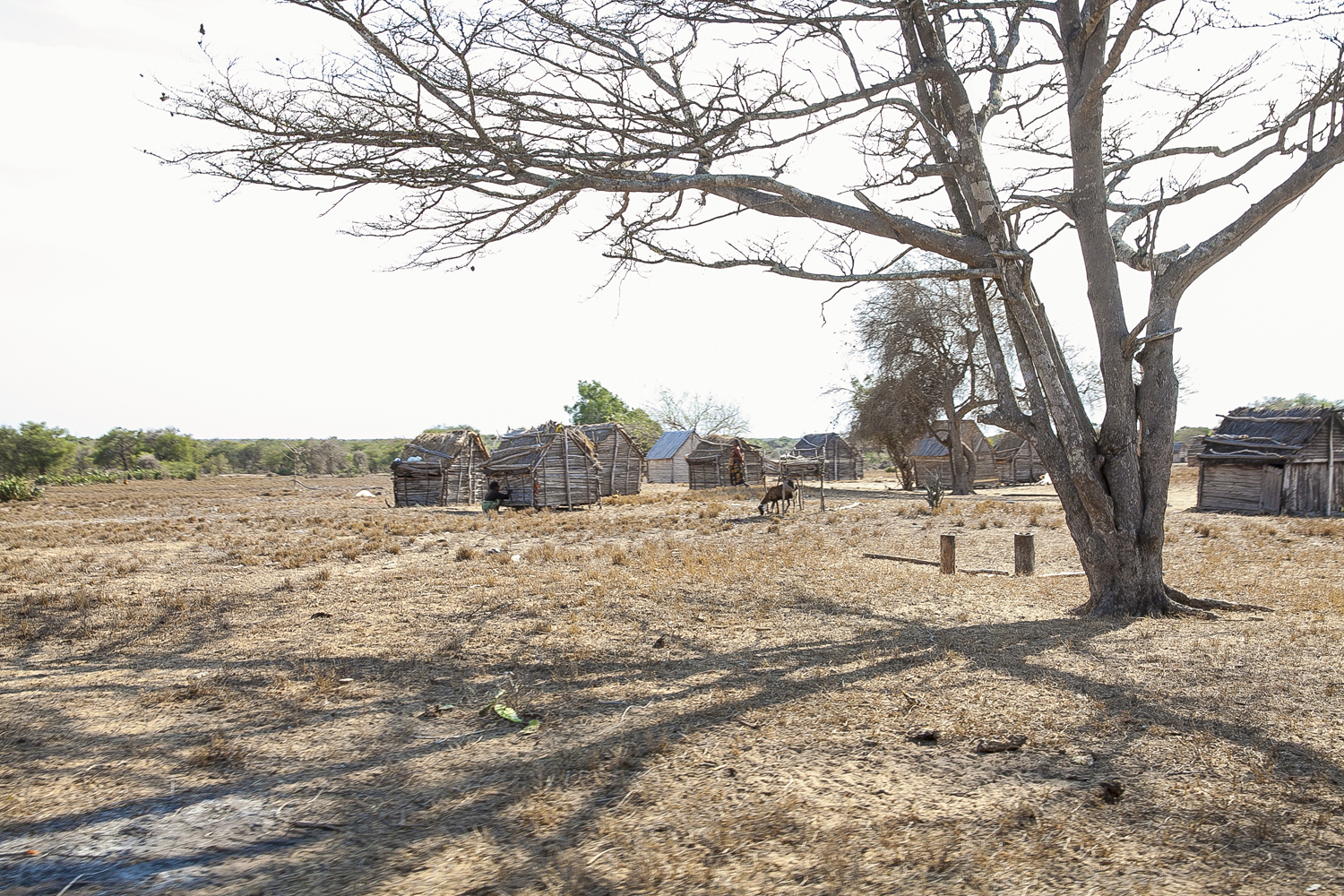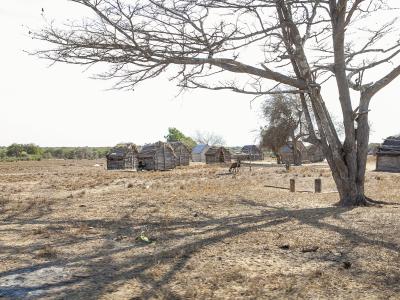
The 5-year Improving Adaptation and Resilience to Address Climate Change in the Rural Communities of Analamanga, Atsinanana, Androy, Anosy and Atsimo Andrefana project was designed to reduce the vulnerability of populations in Madagascar facing the adverse effects of climate change and severe weather events.
With approximately US$5 million in funding from the Global Environment Facility’s Least Developed Country Fund, the US$61 million project aimed to lift the barriers identified in the target areas, such as human pressure on natural resources, lack of financial and technical resources, limited access to credit, limited water and sanitation infrastructure, lack of agro-meteorological and climatic information, lack of awareness among decision-makers as well as lack of coordination between the most affected sectors.
- Community
- Country Office
- Local Governments
- National Governments
The project will directly train at least 80 facilitators and 3,000 farmers through the FFSs.
- United Nations Development Programme (UNDP)
- Global Environment Facility (GEF)
Expected outcomes
Output 1. The establishment of the institutional, structural and technical bases necessary for the dissemination and appropriation of adaptation measures and technologies.
Output 2. The collection and production of reliable climate and weather information to enable informed decision-making with respect to climatic and meteorological conditions.
Output 3. The transfer of adaptation measures, options and technologies required by vulnerable communities in the selected areas.
In Madagascar, the economic sectors most affected by the harmful effects of climate change are agriculture, livestock, forestry, water resources, fishing and health. To enjoy sustainable livelihoods in a context of climate change, the local populations of the Analamanga, Atsinanana, Androy, Anosy and Atsimo Andrefana regions must find a way to strengthen their adaptation and resilience capacities, which is the goal set by the proposed project. To this end, several barriers must be overcome, such as anthropic pressure on natural resources, the lack of financial and technical capacities, the difficult access to credit and inputs, the lack of water and sanitation infrastructures, the lack of agro-meteorological and climate information to inform climate change adaptation decision processes, the lack of awareness regarding climate change impacts and potential adaptation options on the part of decision-makers and the lack of coordination for adaptation interventions among sectors.
This project serves to address these various obstacles by achieving three main outcomes. The first outcome aims to increase the awareness and strengthen the capacities of decision-makers, technicians and vulnerable communities in terms of Climate Change Adaptation (CCA). This awareness-raising support will contributed to build a solid political framework. This first outcome will enable setting up the institutional, structural and technical foundations needed to disseminate and appropriate adaptation measures and technologies. The second outcome aims to ensure the collection and production of reliable climate and meteorological information. Disseminating this information in a manner that meets the needs of end users will foster informed decision-making in regards to climate and meteorological conditions. Finally, the third outcome aims to transfer adaptation measures, options and technologies to vulnerable communities in the selected regions using a participatory approach, building on the strengthened capacities achieved through the first component, and the agro-meteorological information and forecasts produced through the second component.
Une mission conjointe du PNUD et de ses partenaires dans la région Androy
Maintenir les efforts déployés contre la vulnérabilité des institutions et des populations
Une équipe mixte composée de représentants du Ministère de l’Économie et du Plan (MEP), le Ministère de l’Environnement, de l’Ecologie et des Forêts (MEEF), et du Programme des Nations Unies pour le Développement (PNUD) s’est rendue dans la Région Androy du 16 au 20 juillet 2018. Objectif : réaliser le suivi et la mise à niveau des activités de relèvement et de développement mis en œuvre dans le cadre du Plan de Relèvement et de Résilience pour les districts de la Région les plus touchés par la sècheresse.
Madagascar - Impact positif du Plan de relèvement et de résilience
Maintenir les efforts déployés contre la vulnérabilité des institutions et des populations, face à la sécheresse dans l’Androy. Une délégation conjointe du PNUD et de ses partenaires ministériels a pu l’apprécier lors d’une mission dans les districts les plus touchés. Des résultats encourageants. Du 16 au 20 juillet derniers, une équipe mixte, composée de représentants des ministères de l’Économie et du plan (MEP), de l’Environnement, de l’écologie et des forêts (MEEF), et du Programme des Nations unies pour le développement (PNUD), a effectué dans l’Androy une mission de suivi et de mise à niveau des activités de relèvement et de développement. Elles entrent dans le cadre du Plan de relèvement et de résilience pour les districts d’Ambovombe, de Bekily, et de Beloha, les plus touchés par la sècheresse.
La mission a évalué les initiatives finalisées, l’état d’avancement des programmes de lutte contre la pauvreté, d’appui à la gouvernance locale et d’adaptation des communautés au changement climatique, ainsi que les redressements nécessaires.
In the News
Pnud : Réduire la vulnérabilité des populations face au changement climatique
Pnud - 5 millions de dollards pour l'adaptation et la résilience en millieu rural
Adaptation au changement climatique : le Pnud débloque 5 millions de dollars
Expected Outcomes
1. The institutional and technical adaptation capacities of ministries in charge of agriculture, livestock, water and sanitation of local governments of the regions of Androy, Anosy, Atsimo Andrefana, Analamanga, and Atsinanana are strenghtened
2. Meteorological, climate and socio economic information are packaged into decision support information and disseminated to relevant stakeholders of the line ministries and communities
3. Adaptation measures including technologies are implemented by communities in Androy, Anosy, Atsimo Andrefana, Analamanga, and Atsinanana
Expected Outputs:
1.1: A training program for management of climate risk for vulnerable communities livelihoods and living conditions is designed and implemented for policy decision makers, senior executives and technicians of ministries in charge of agriculture, livestock, water, and sanitation and of local governments, NGOs and community based organizations (CBOs) supporting the rural development of the regions of Androy, Anosy, Atsimo Andrefana
1.2: The local development plans for the regions of Androy, Anosy, Atsimo Andrefana, Atsinanana, and Anamalanga and related budgeting frameworks are revised to integrate climate risks and incentives to advance adaptation
1.3: The water and sanitation development plans for the Watersheds of the South, Center and East, as well as the municipal plans for developing access to sanitation and water (PCDEA) of the communes of Androy, Anosy, Atsimo Andrefana, Atsinanana, and Anamalanga and their budgets as well as the National Program for Access to Drinking Water and Sanitation (PNAEPA), are revised so as to integrate climate risks and relevant adaptation options
1.4: Key public policy frameworks including the National Seed Strategy (DSNS) and the National Strategy for Agricultural and Rural Training (SNFAR) and the National Reforestation Strategy are revised to integrate climate change
2.1: Installation of 2 agrometeorological stations in Ampanihy and Amboasary-Sud, 2 synoptic stations in Betroka and Faux-Cap and 3 climatological stations in Betroka, Beroroha, and Sakaraha. and creation of a network of 5 hydrometric stations in the watershed of Menarandra, and of 12 in the watershed of Mandrare, \of two synoptic stations in Betroka and Faux Cap and of three auxiliary climate stations in Betroka, Beroroha, and Sakaraha
2.2: A training program is designed and implemented for the technicians of the Meteorology Directorate, the Ministry of Agriculture, Agencies for watersheds for the South, Center, and East and the Directorate of Disaster Management to enable them to analyze climate and weather data in an integrated manner with key socio-economic and biophysical data and generate policy relevant for key sector based planning and management
2.3: A system for producing and disseminating decision making support information to manage disasters and climate risks, combining data on weather condition (including satellite surveillance data), climate projections, natural resources development, social and economic conditions (livelihood, living conditions, vulnerability, etc… climate change impact and adaptation) is designed, institutionalized, and is put into operation
3.1: Climate resilient Agrosylvopastoral technologies, including, but not limited to, the use of crop calendar and other climate and weather condition information, drought tolerant/ shorter cycle seeds, zebus species and other input and methods for managing soil fertility and humidity are demonstrated with 3,000 farmers from the 30 most vulnerable communities
3.2: Dredging sewage and rainwater canals, high intensity of labor force works, and other low-cost measures to fight against the silting of canals, the raising of contours and/or the strengthening of vulnerable points of the water and sanitation infrastructures to strengthen the vulnerable community based water supply and sanitation systems in the regions of Androy, Anosy, Atsimo, Andrefana, Analamanga, and Atsinanana is strengthened in response to climate change and variability
3.3: Climate resilient agricultural advisory support groups made up of extension workers from agriculture support centers (CSAs) and members of communities are established and operationalized to provide climate resilient agriculture advisory support to the vulnerable communities of the regions of Androy, Anosy, Atsimo, Andrefana, Analamanga, and Atsinanana
3.4: A sustainable climate resilient agricultural input supply chain, laying on seed growers groups, NGOs and CBOs is established.
3.5: A public private partnership aiming at fostering and enabling the combination of public and private sector contribution in the provision of institutional, financial and technical support for the integration of climate risks and adaptation options in the agricultural, water and sanitation sectors in Madagascar
3.6: Adapted financial credits products , to finance communities to make climate change adaptation and resilient alternatives incomes generating activities (IGAs) are developed by Microfinance Institutions (MFIs) networks

